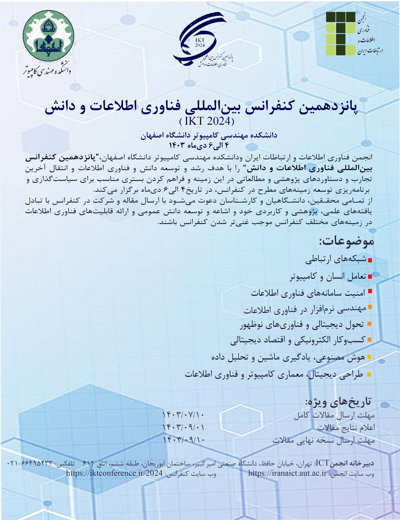0% Complete

نویسندگان :
کلمات کلیدی :
چکیده :
لیست مقالات بایگانی شده
Mohamad Khorsandi - Alireza Dastmalchi Saei - Mohammadreza Sharbaf
Mahdi Movahedian Moghaddam - Kourosh Parand
Alireza M. Hosseini - Dr Abbas Mohammadi
Faeze Sadati - Dr Behrooz Rezaie
Somaye Imanpour - Ahmadreza Montazerolghaem - Saeed Afahari
Faezeh Rahimi Sebdani - Mehdi Nasri
مهدی علیرضانژاد - عمار عبیس حسین المعموری
مینا علیانژاد - نسترن زنجانی - زهرا عسکری نژاد امیری





